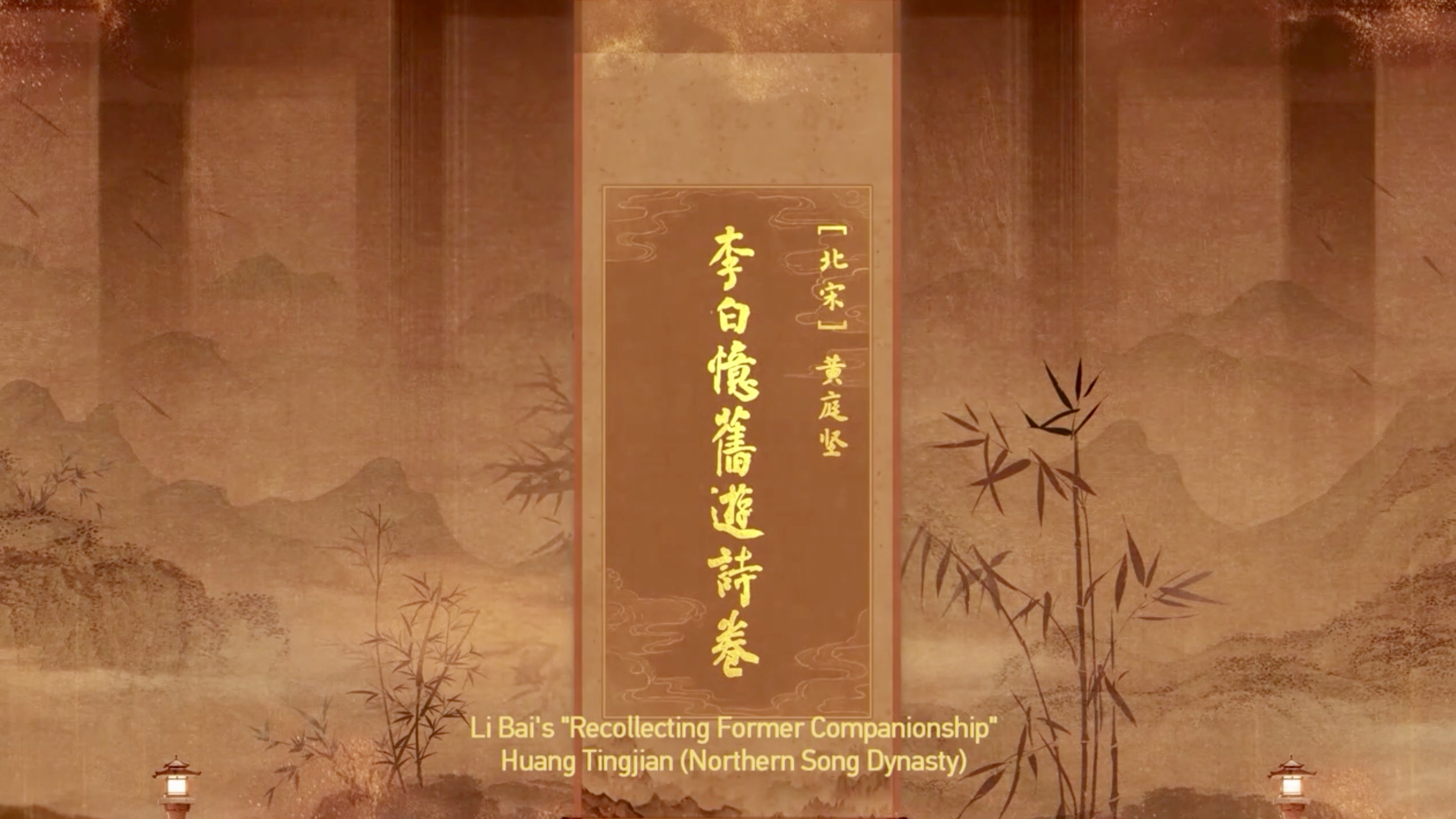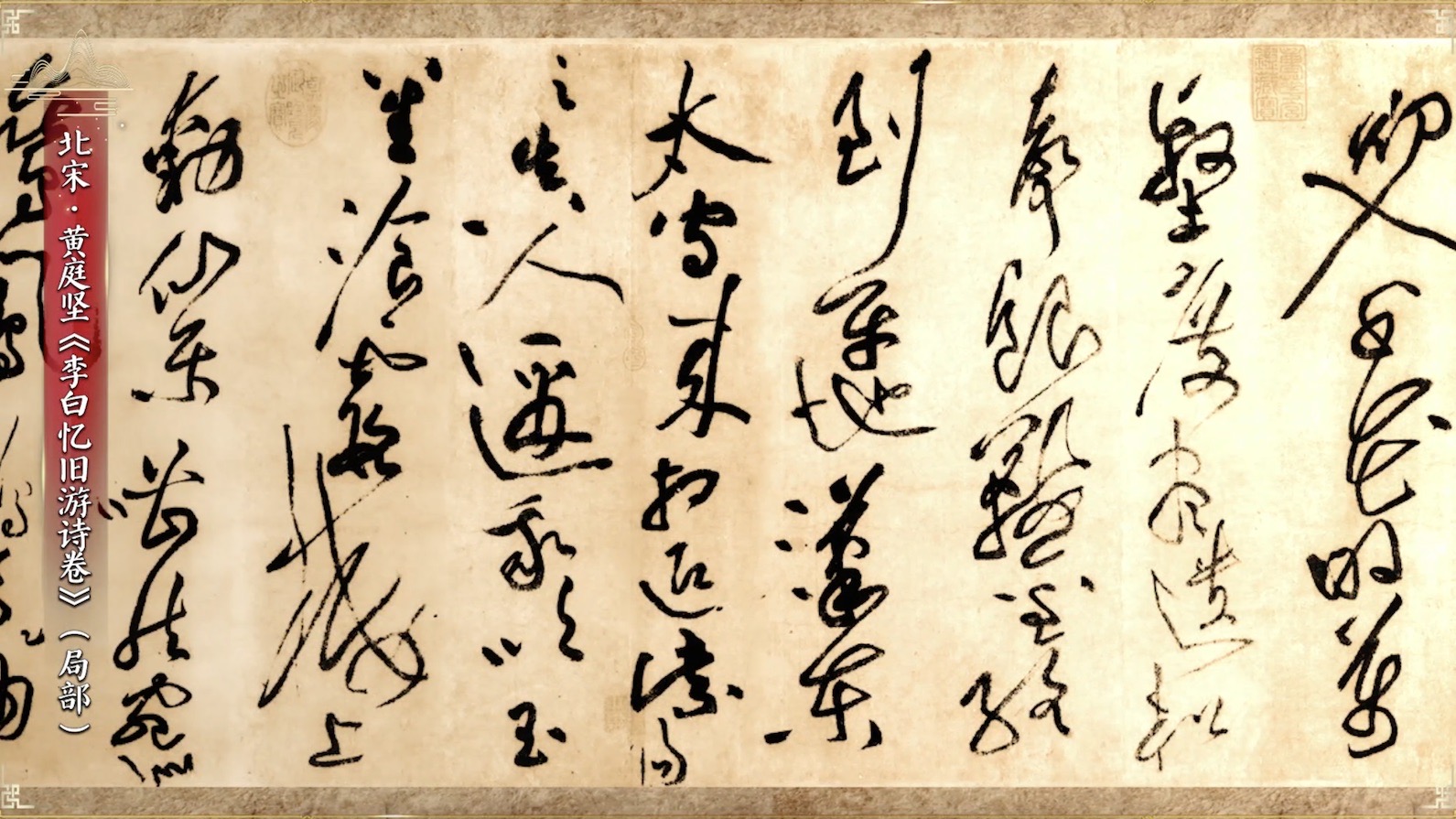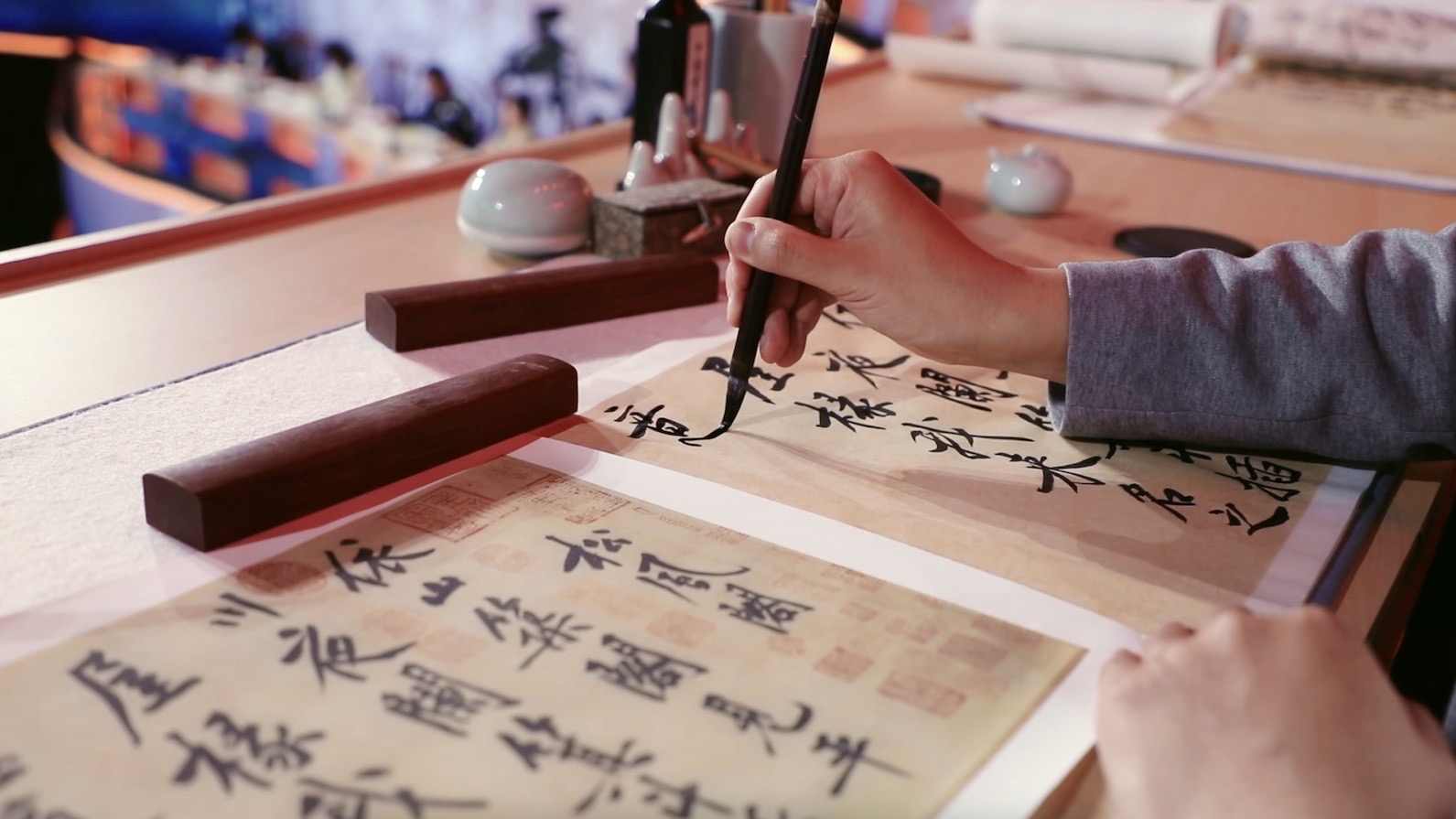"Li Bai's 'Recollecting Former Companionship'" is a masterpiece of cursive script by Huang Tingjian from the Northern Song Dynasty (960-1127), more than 900 years ago. It's a work created in Huang's later years, after he was demoted. Critics say that through vigorous and dynamic brushstrokes Huang created a fusion of visual and emotional sensations in the work which complemented the artistic conception of the poem.
12:18

As a student of famous calligrapher Su Shi, Huang Tingjian also made great accomplishments in the field of calligraphy and was listed as one of the "Four Great Calligraphers of the Song Dynasty." Huang greatly admired Tang Dynasty (618-907) poet Li Bai throughout his life. The latter has been honored as the "Immortal Poet" for his poems filled with romance and fantasy. In paying tribute to the great poet, Huang created a series of poems and calligraphy works and "Li Bai's 'Recollecting Former Companionship'" was one of them.
Meng Man, a professor from Minzu University of China, explained that similar to the extreme passion expressed in this calligraphy work, the poem itself was steeped in emotion.
"What kind of poem is it? I think this poem combines both conformity and wildness. If you look at the structure of this poem, you will find that it is very rigorous. It describes the four times Li Bai and his friend Yuan Yan met, traveled together, and then separated. The structure is well-organized, while the emotions expressed are unrestrained," said Meng.

A detail of "Li Bai's 'Recollecting Former Companionship'" by Northern Song Dynasty (960-1127) calligrapher Huang Tingjian /CGTN
A detail of "Li Bai's 'Recollecting Former Companionship'" by Northern Song Dynasty (960-1127) calligrapher Huang Tingjian /CGTN
Unlike his teacher Su Shi and other calligraphers who were deemed members of the "Script School," Huang Tingjian was never seen as a follower of this aesthetic. As a member of "Stele School," Huang learned seal script and clerical script, which afforded him groundbreaking new skills completely different to the approaches adopted by any of his predecessors in calligraphy.
This difference can be identified from the brushstrokes in Huang's works, according to Chen Zhongkang, a professor from the Chinese National Academy of Arts.
"When we look at his script, it may appear to be a cursive script at first glance, but each stroke is executed with the round and rolling techniques of seal and official scripts, exuding the essence of ancient Chinese calligraphy," said Chen.

A calligraphy enthusiast practices Huang Tingjian's calligraphy work. /CGTN
A calligraphy enthusiast practices Huang Tingjian's calligraphy work. /CGTN
Experts believe the artistic value in Huang Tingjian's calligraphy also lies in his innovative use of dots and strokes, which are key aspects in cursive script for the conveying of emotions. For example, Professor Shen Hao from the China Academy of Art believes that Huang's use of dots and strokes is expressive in "Li Bai's 'Recollecting Former Companionship.'"
"For example, in 'qing feng chui ge,' the three dots of the character 'qing' create a sense of lightness and a well-structured form. The harmonious relationship between the left and right parts of the character, as well as the tension created by the overall structure, all have a modern aesthetic appeal. This kind of feeling reflects his advocacy for embracing tradition while expressing a modern and contemporary outlook, which was quite innovative for that time," Shen explained.